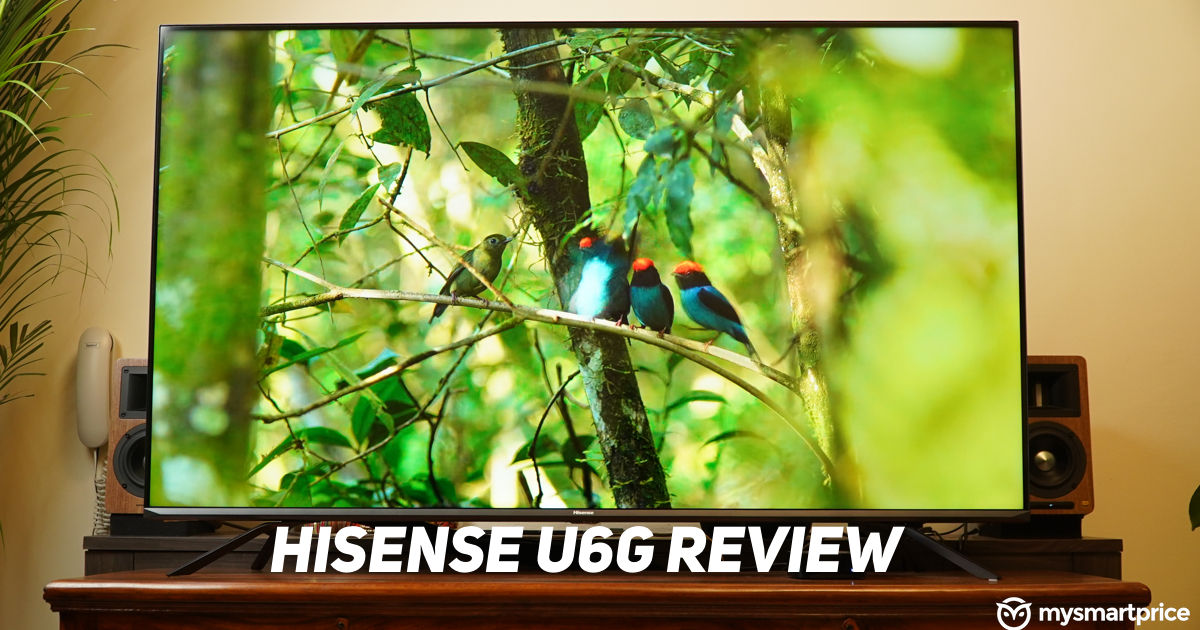
While there are budget TVs in different shapes and sizes, and offering a smattering of really cool features, there are very few out there that have the one feature that matters a lot to TV enthusiasts out there – Full Array Local Dimming (FALD). Enter the Hisense U6G, a QLED TV with backlight dimming zones for a darker, more vibrant picture. Let’s find out if it is actually worth 60k.
Design
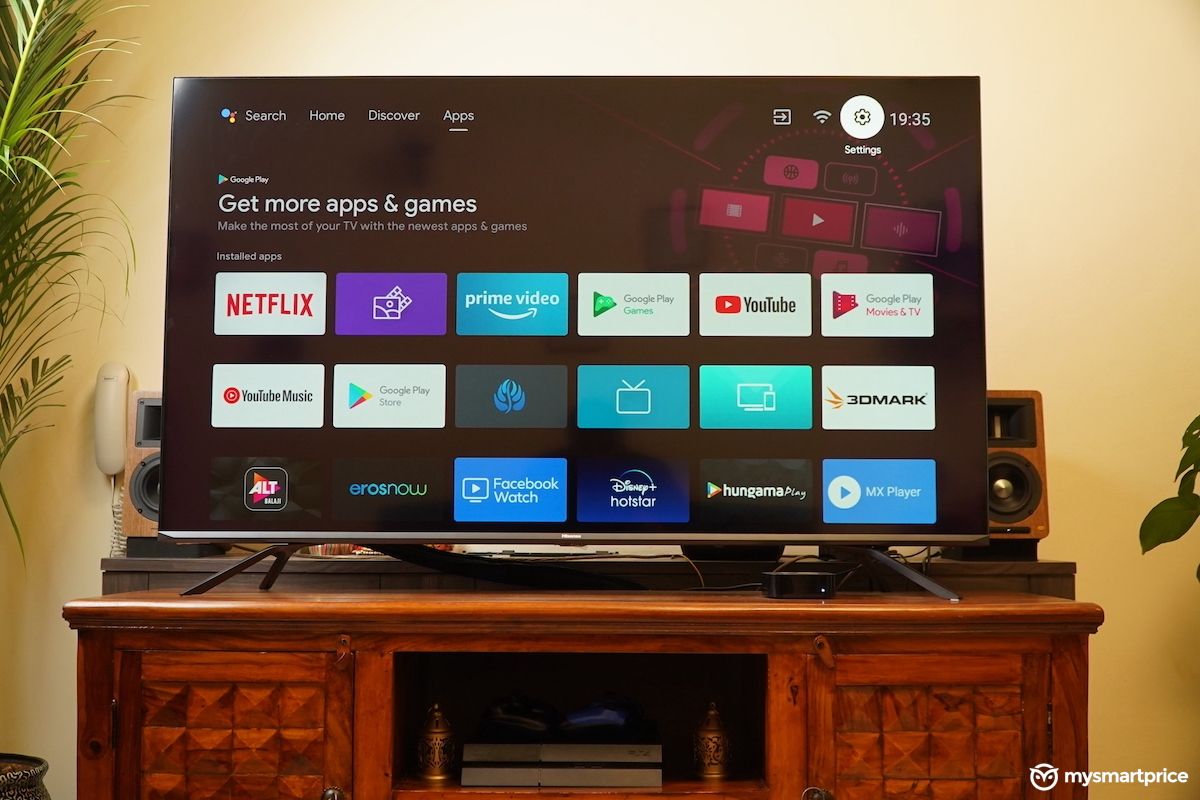
The Hisense U6G has a very basic, mostly forgettable design; there’s nothing distinctly standout about it. You have an all-Grey rear panel, which uses both plastic and metal in the construction. But, the design is pretty average. In any case, whether you perch it on a table top (like I did) or wall mount it, the rear panel is mostly going to stay hidden, so it doesn’t really matter. What I do like about the functional aspect of the design is the dedicated track on the stands for looping your wires. I am a huge fan of cable management and Hisense is clearly appealing to my sensibilities.
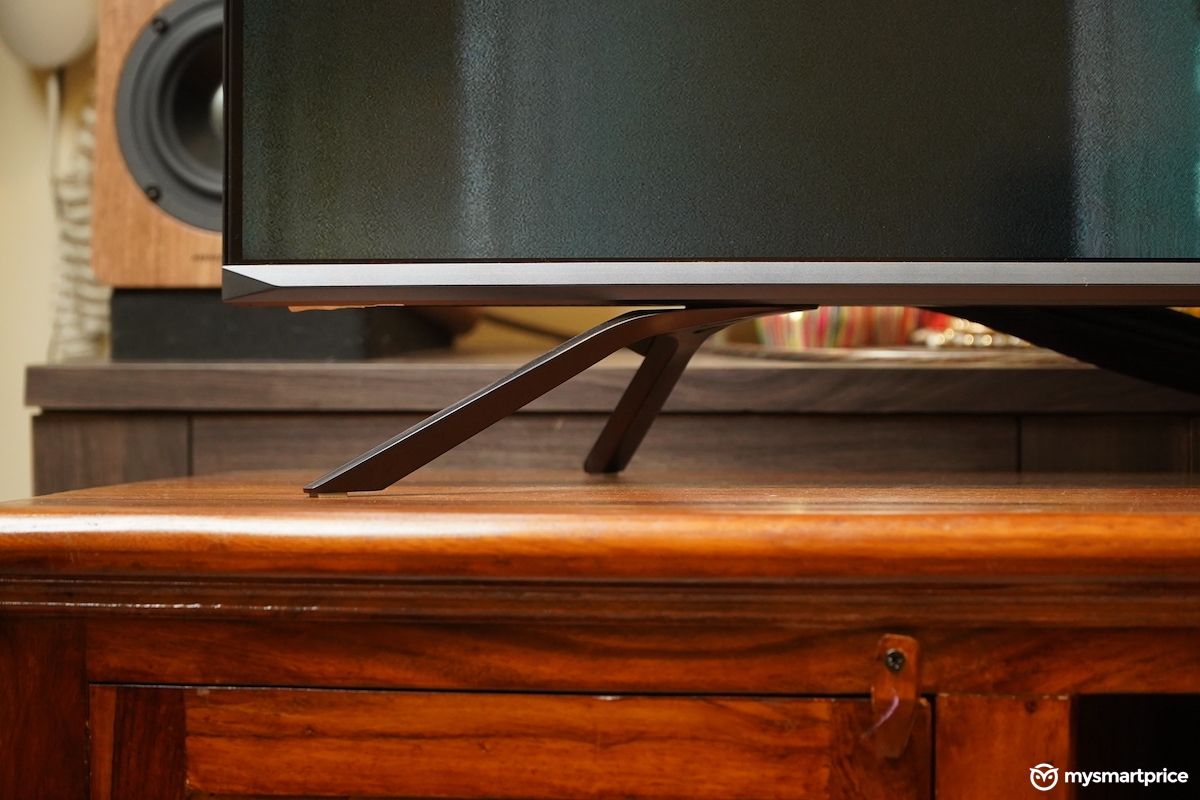
The TV has very tiny bezels and is slim too. If you plan to set the TV on a table, the metal stands are pretty sturdy and can hold up the TV firmly. There’s very little wobble,
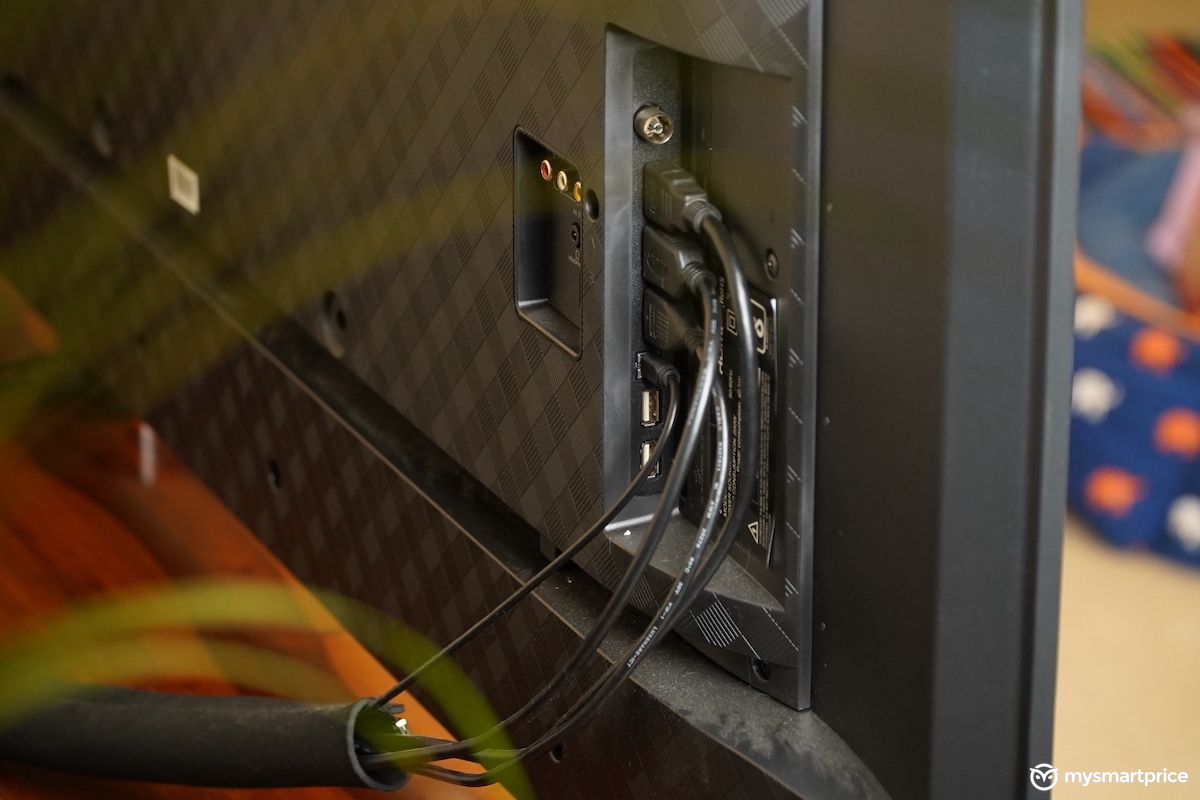
As for the ports, you get three HDMI 2.1 ports, one of which has eARC enabled. Much like most budget TVs that have the HDMI 2.1 spec, this one too doesn’t offer the full extent of its capabilities. All you get is support for ALLM (Auto Low Latency Mode) which switches on – in Game Mode – the moment you fire up your game console. There’s no support for VRR (Variable Refresh Rates) or 4K@120Hz, which gamers would’ve appreciated.
Apart from this you get a couple of USB 2.0 ports, an optical out, a line-in for cable TV, and an Ethernet port as well.
Remote

Hisense doesn’t do anything fancy with the remote either. It is made of plastic and has almost all the buttons you could ask for. I like the direct access buttons for Picture and Sound modes. Although, they are very tiny and it would’ve been nice to have a larger surface area.
To add to those woes, the Home button — with the old school Android icon for Home — is too close to the down button on the D-pad. So, my pudgy thumb would accidentally keep hitting the down button instead of the Home one.
Software and Performance
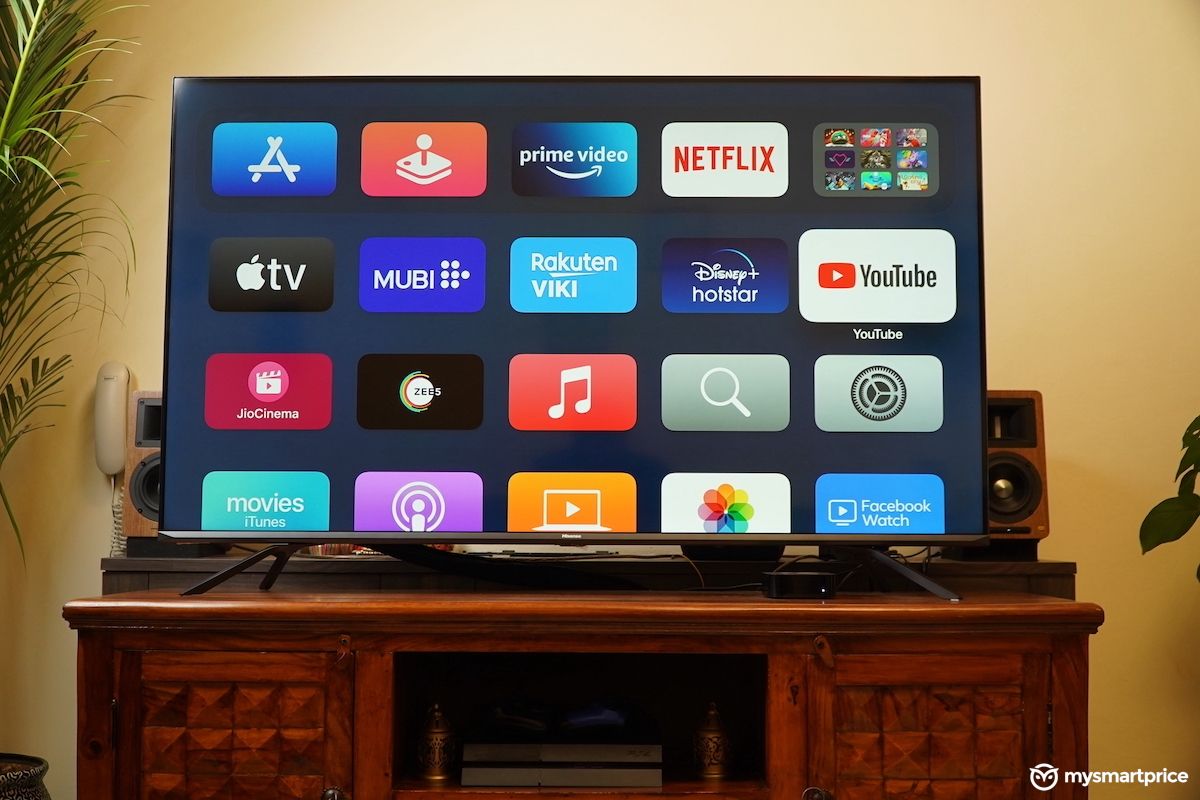
The Hisense U6G is an Android TV, which is pretty apparent from the bright splash screen that pops up every time you switch on the TV. But, it is running the older version of Android 9 Pie. That said, with Google upgrading all Android TVs to use Google TV’s content-heavy interface, I didn’t really care about the base version of the operating system. The new wrapper is leagues better with curated content from your content services showing up front.

As for the processor, you get your standard quad-core SoC with four Cortex A53 cores and a fairly powerful Mali 470MP GPU. And, along with that, you get your category-standard 2GB of RAM. For the most part, the daily performance is pretty solid with no hiccups. The only time I was irritated by slowdowns was when it would take a tad too long to automatically switch to the Dolby Vision mode. Otherwise, it was smooth sailing through and through.
Picture Quality
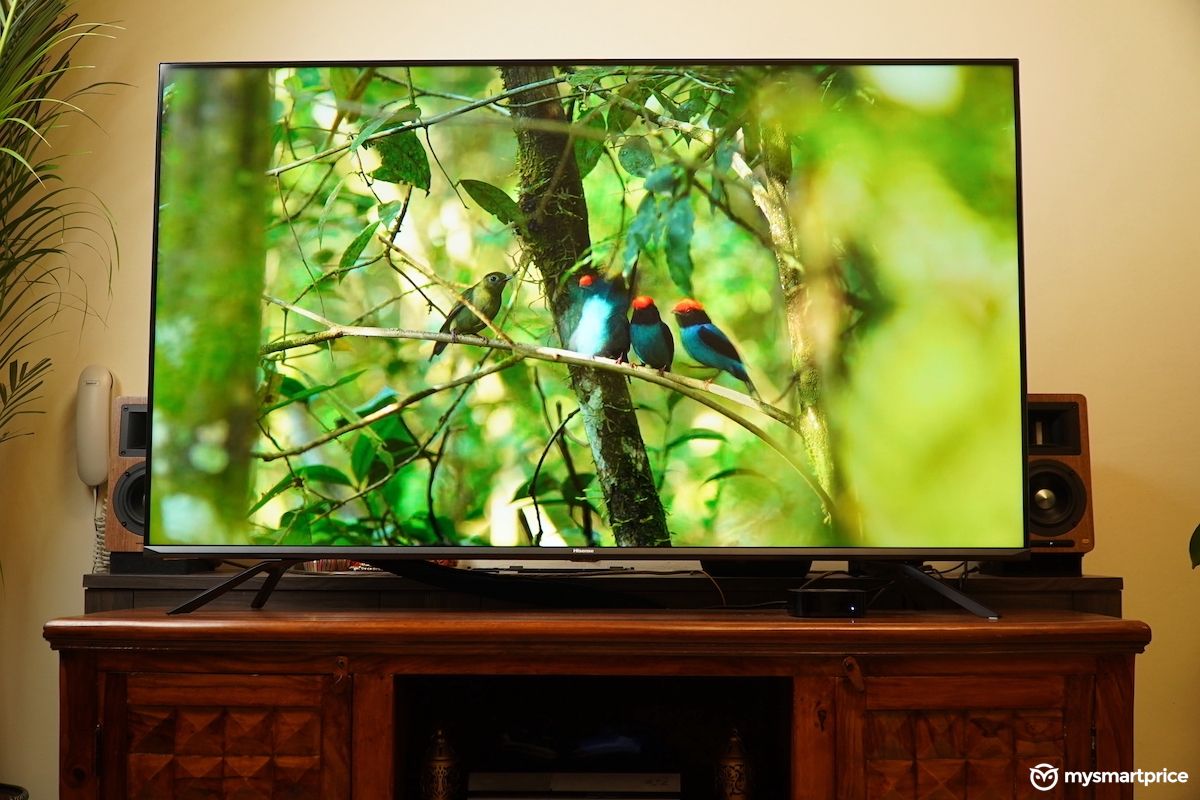
The biggest draw of the U6G is that it is a budget QLED that also comes with 72 local dimming zones and an advertised peak brightness of 700 nits in HDR content. TV nerds would know how important it is to have local dimming zones because you get deeper blacks and a more realistic depiction of dark scenes. And, that’s where the U6G trumps the competition with its fabulous price-to-performance ratio. I can’t think of a single QLED panel under Rs 70,000 that offers FALD too.
You can set the level of backlight dimming in every single Picture mode. And, it works wonders. I did notice some bloom around the brighter portions of certain scenes but that’s because I was testing intently. In casual, everyday usage, you won’t even care. But, what could be concerning to you is the extremely annoying brightness jumps in certain content when local dimming is on. It happens when the scene has two shots that have extremely varying levels of brightness.
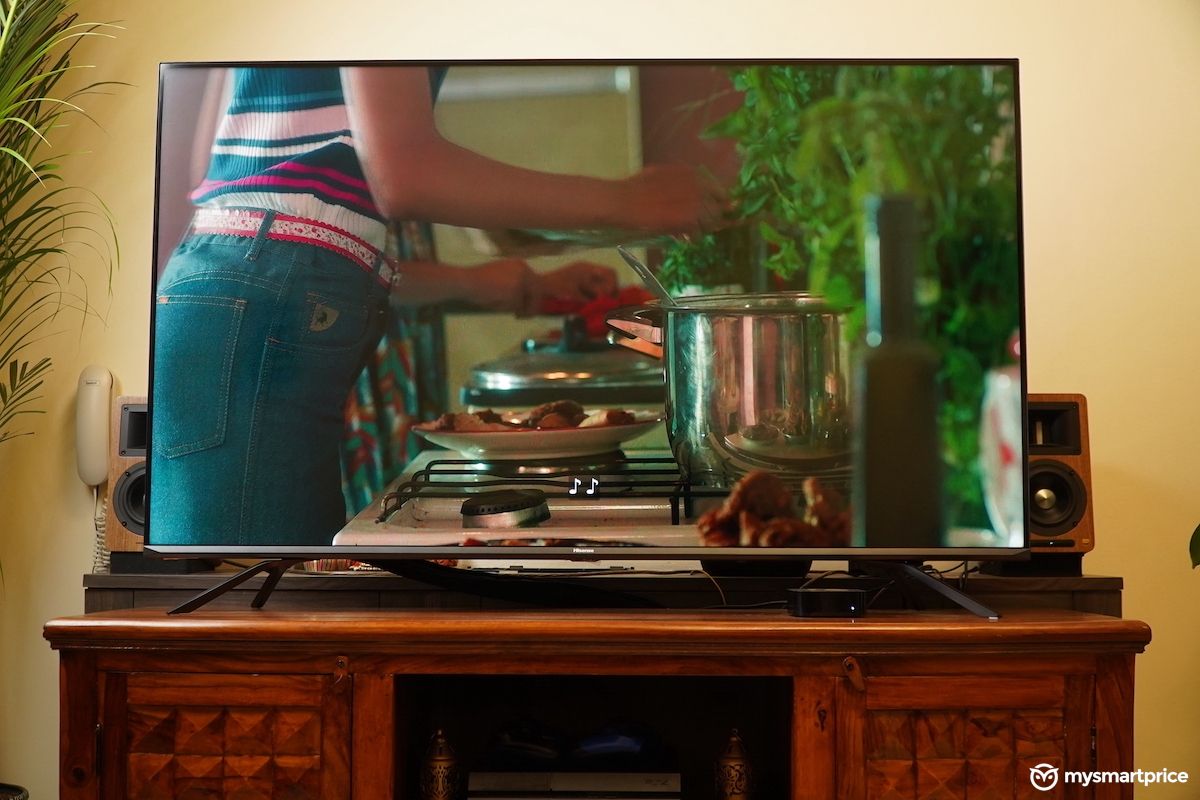
Talking about brightness, the TV is rated to touch about 400 nits in SDR and 700 nits of peak brightness in HDR. My friend, Sameer Mitha from Digit, noticed in his review that the TV – very oddly – touches about 600 nits of brightness in a 25% window and not in a smaller 10% window. This is probably what causes the slight blooming, which I alluded to earlier, in smaller light sources in certain scenes. Regardless, we are nitpicking here and most people will appreciate how bright the TV can get. And, for a budget TV, it is fairly bright even if you have the TV in a room which gets a lot of natural sunlight.
All that said, since this is a VA panel, the colours start fading even at the slightest of angles. Which is to say that the viewing angles are not great.
As for the colour accuracy, stick to the Cinema mode for the best results. However, I did notice that the TV tends to accentuate the Reds to make the picture look more attractive. In any case, the U6G switches to Dolby Vision and HDR10+ automatically when you are playing any supported content on Netflix or Prime. The HDR experience, to my eyes, was pretty good.

If you are a gamer, the TV does offer ALLM in SDR Game Mode. So, your input latency reduces drastically. But…but…but…in HDR gaming on the PS4, there is no specific Game Mode, which is a huge letdown. Regardless, the HDR performance in single player games – which is what I care about – is superb. Especially while playing a game like Last of Us 2, the switch between SDR and HDR visuals are stark making for a more immersive gaming experience.
Overall, this is A++ picture quality on a budget QLED TV and definitely the best you can find out there for this price.
Sound Quality
I really have only one thing to say about the 24W speakers in the U6G – they sound below average. I don’t really need to get into the specifics of it; just buy a soundbar or a proper speaker setup to enhance your TV watching experience. What’s the point of buying a TV with such a good QLED panel and settling for a sub-standard audio experience?
Should You Buy the Hisense U6G?
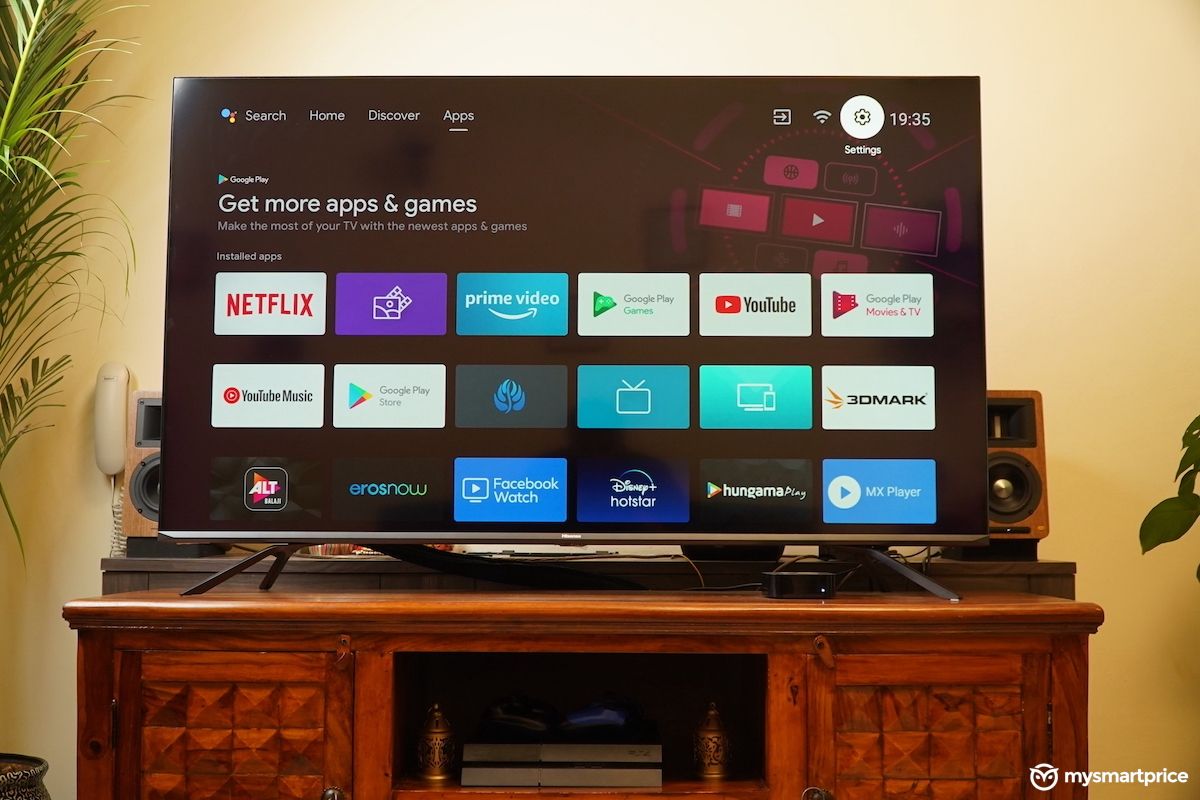
Even before this review is live, I have already recommended the Hisense U6G to a couple of folks. The sum of its parts — in this case, the picture quality, the features on offer, the performance, and the affordable price — makes the U6G a fantastic purchase. But yes, if you can spend more, the Samsung Frame TV is definitely a better bet. However, the other alternatives such as the Mi QLED 4K 55-inch TV or the OnePlus Q1 cannot match the Hisense U6G in the deep Black levels or vibrancy of the colours.
The Hisense U6G is truly the best bang for the buck TV I’ve reviewed in a long, long time. I think Xiaomi, Realme, and OnePlus really need to step up their game now. Only if Hisense could step up its marketing game…
What do you think of the U6G? Let me know in the comments section below.
















